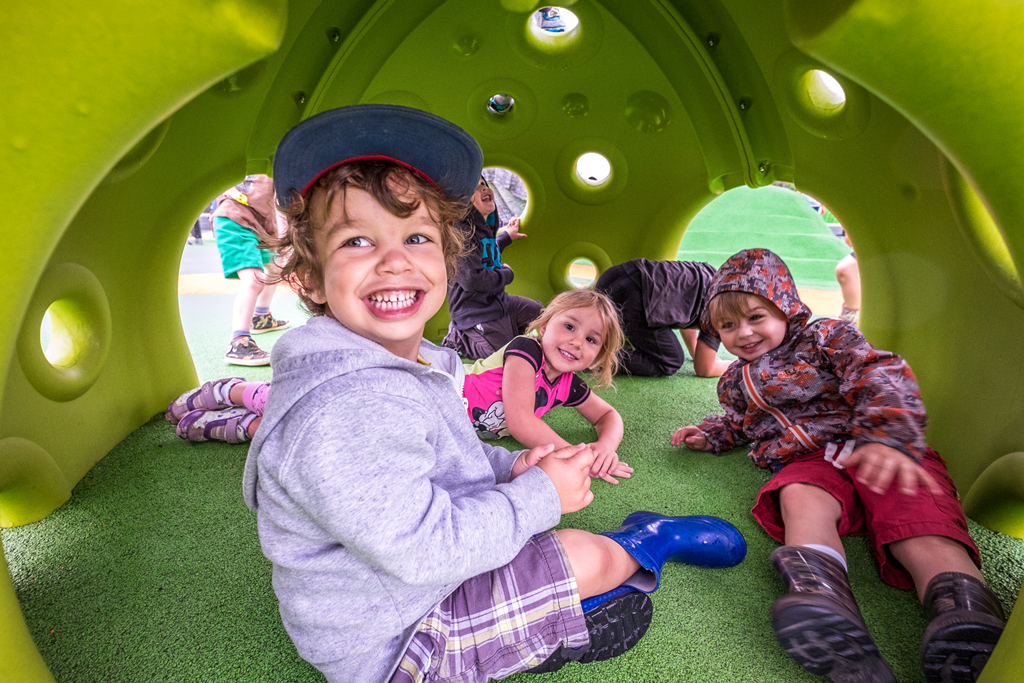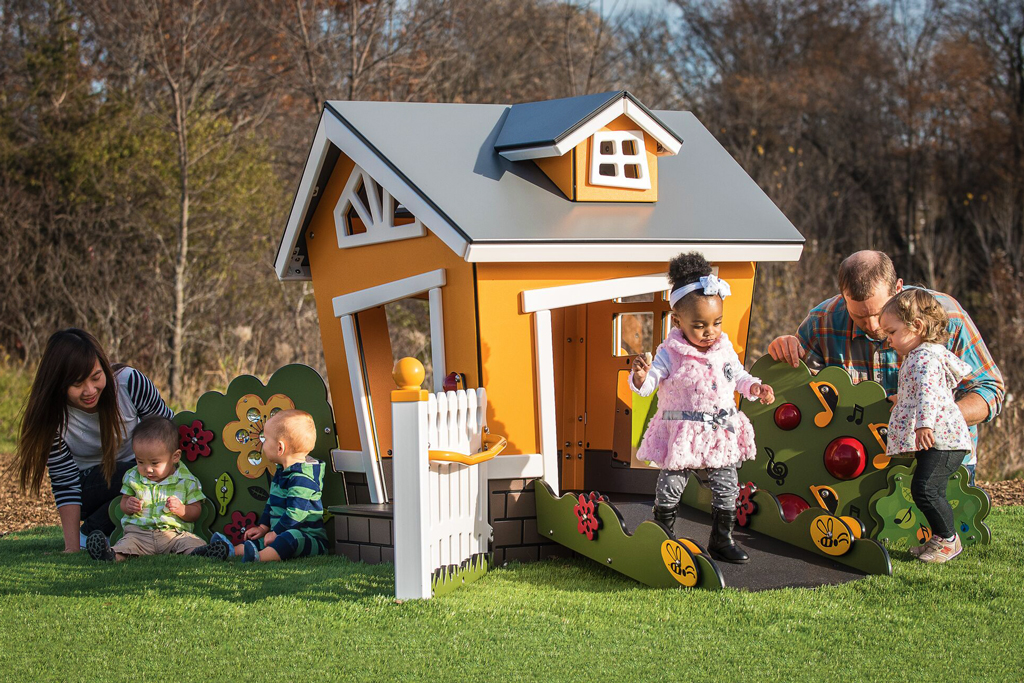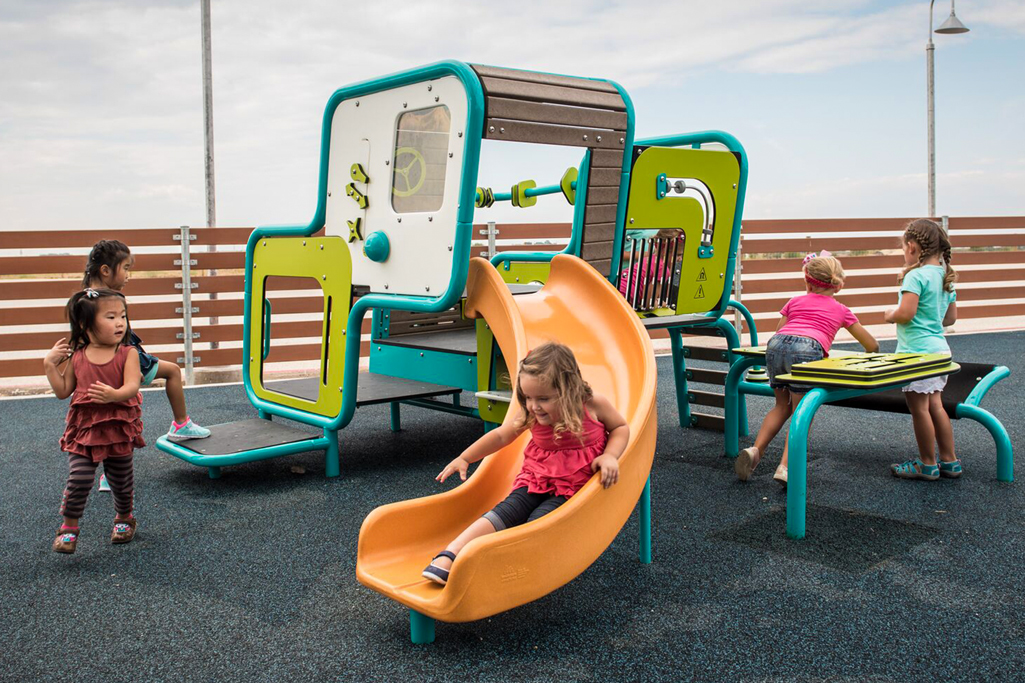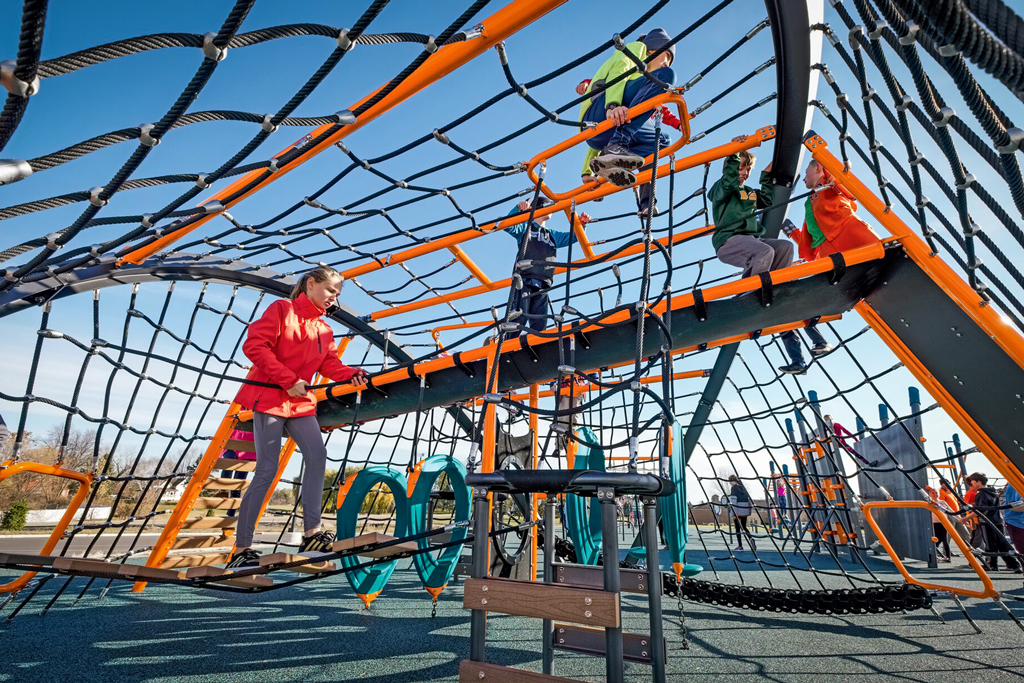How to Plan the Perfect Playground
Remember that feeling of climbing up the slide to grasp your friend’s outstretched hand to save you from the alligators snapping at the bottom, or twisting the swings and leaning out so they spun you so fast it left you dizzy, thrilled, and laughing? As a child, playing on the playground meant adventures with friends and pushing yourself a little further to master the monkey bars. It meant freedom from adult rules and the freedom to climb, slide, soar, and spin in as many ways as you could imagine. While you were having all that fun on the playground, you probably weren’t thinking of how developmentally appropriate the equipment was, or that the activities you were doing may have been considered “risky play”, or how the hand-holds were in just the right place for grabbing onto to get you safely off the wobbly ladder and onto the deck.

Kids haven’t changed, but playground designs sure have! Playgrounds have come a long way from the freestanding metal equipment that was installed in the 60’s and 70’s, typically on concrete or hard-packed dirt. Playgrounds today offer a lot more play value and safety in terms of how they are designed and built. The Canadian Standards Association (CSA) developed standards about safe materials, installation, equipment, surfacing, layout, and maintenance to help keep children safe on playgrounds. Habitat Systems only provides equipment and designs that adhere to and exceed these guidelines, leaving you with the freedom to design the playground of your community’s dreams, worry-free. Here are our best tips for things to consider when planning a playground for kids in the various stages of their development.
Infants and Toddlers

Infants and toddlers are exploring the world through all of their senses. Excellent features for this age group are crawl tunnels for games of peek-a-boo and for moving through a different space from one place to another. Small slides and ramps encourage balance, and low stairs or ramps with rails help build upper body strength and independence when moving through the play area. Some panels incorporate moving pieces, like a car in a track or sliding shapes, and offer tactile play that provides a challenge for kids. Other panels have components that produce sounds to keep little ones engaged. Play features should be visually appealing as well as having textured finishes for touch exploration. Providing enough space around the play areas for adults to supervise and play with their children is important when considering the layout.
Two to Five-Year-Olds

The preschool years are when a child’s world begins to expand beyond the familiarity of home and daycare and they start to explore their surroundings more independently. Playgrounds for this age group need to be sensory-rich, but also offer quiet spaces for imaginative and cooperative play. Sensory rich play can include a mix of play equipment that challenges them physically and stimulates their vestibular system. The vestibular system processes the body’s relationship to the earth, sending messages to the brain via the inner ear – think spinning, sliding and swinging. Sensory panels with moving components and outdoor musical instruments are also great to consider. Imaginative play provides opportunities where kids can make their own fun, like playing at a store panel under a deck and “paying” for some pretend ice cream with playground wood chips.
Five to Twelve Year Olds

The sky’s the limit when it comes to choices for exciting and challenging playground components for school age children. School playgrounds can be categorized areas for primary ages (Kindergarten to Grade 3) and for the intermediate grades (Grade 4 to Grade 7). Kids in this age group need lots of opportunities to move their bodies and to test and build their strength, endurance, and balance. The equipment should provide some element of risky play, which helps develop the problem solving and decision making skills they will need throughout their life. Risky play provides the element of perceived risk that’s developmentally appropriate and teaches kids to learn how to navigate risk.
How Habitat Can Help
What kids play on helps to foster important skills that last a lifetime, and that’s why so much innovation, research, and testing goes into the development of our playground equipment. Habitat can help you to design a playground and build a world of wonders for kids, and you can feel comfortable knowing that you’re being assisted by experts. The designers, installers, and Business Development Managers at Habitat Systems are all CPSI (Canadian Playground Safety Institute) certified and the playground equipment we sell from Landscape Structures is IPEMA (International Play Equipment Manufacturers Association) certified.
Connect with us today to see how we can help make your playground dream a reality, and in the meantime, get inspired by our portfolio of playground systems in Western Canada for every age and ability.

